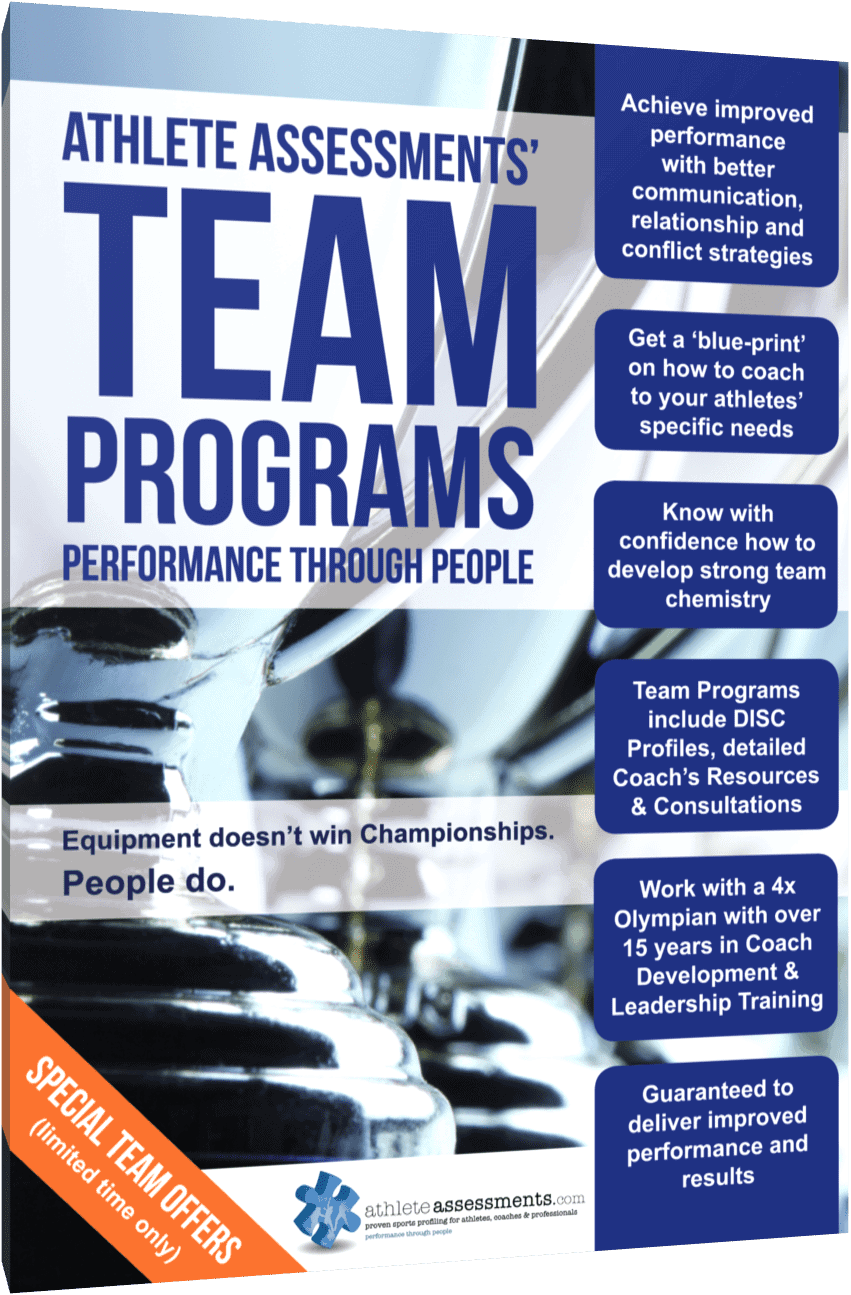Strategies that drive the development of team culture are universal and they include establishing a team’s; goals, roles, values and behaviors
By Mim Haigh, Sports Writer – Athlete Assessments
In our early article on ‘Getting Clear on Team Culture’ we provided an explanation of what team culture looks like in a sporting context and a guide for coaches on how they can identify what their team culture is. In this article, Bo Hanson, Senior Consultant at Athlete Assessments explains that the principles of establishing a team culture are the same regardless of the sport or sporting code.
Hanson also delivers a sobering warning, explaining what happens when a team culture is allowed to emerge organically. He says, “If you take a hands-off approach, and just let a culture grow, you will have one, but typically it’ll be driven by the most influential person on the team and unless they’ve got a good understanding of the type of culture that’s going to give you quality results, you could be subscribing to a culture that doesn’t really work. You could also be supporting a culture that doesn’t reflect the character of the team or the values that you would like the team to aspire to”.
He says, “the important thing is that as a playing group, the team defines what kind of team they want to be, irrespective of their track record. A team can put these kinds of parameters around their performance at any stage, when they’re coming together or even mid-season, but defining what kind of team you want to be is certainly something we would recommend to form part of the preseason program.”
Athlete Assessments recommends the GRIP model as a starting point for developing team culture, in addition to establishing the group’s core values and getting clear on what constitutes above and below the line behavior.
Watch the below video as Bo Hanson explains how to use the GRIP Model for your team:
GRIP is an acronym which stands for goals, roles, interpersonal relationships, processes and procedures. Hanson says, “we use the GRIP Model to guide us when we work with a team, first we get clear on our Goals, which then break down into the group’s, values and behaviors. After we talk about the Goals piece, we then talk about what Role each athlete is going to play in making sure they uphold the standards needed to reach the goals. We talk about the technical and non-technical roles each person plays in the team and the Interpersonal relationships within the group. Specifically, we address how we’re going to communicate and work together and finally, we look at the Process, Procedures and structures that we want to run”.

“When a team is successful, typically, they do all those four elements really well. You can see massive gaps in that structure when teams are not successful. Usually one or sometimes even all of the GRIP elements have been poorly defined”.
The GRIP model establishes the fundamental groundwork for a team’s culture, then the group can settle on their core values and link them to keywords. Hanson explains, “we outline these values in the GRIP sessions, but spending time developing them is essential because, core values align the group behind a common cause, essentially, they also determine behavior. We find that three is an effective number of core values. Core values should reflect the aspects of performance which most differentiate your group from the competition, they are about the non-negotiable aspects of your performance. Core values guide you every day, they drive the group, if everyone aspires to live these values in everything they do, these values will lead you to the top of the table. You will be proud of your performance and know you’ve done everything in your power to propel yourselves to the top”.
He then goes on to explain that successful teams talk about their core values regularly, in training and in competition, and a set of acceptable and unacceptable behaviors, otherwise known as the above and below the line behaviors, are a natural consequence of core values. Once guidelines have been drawn up for above and below the line behavior it’s easy to hold athletes accountable to this performance code.
Hanson explains that all these strategies apply equally to younger teams, although coaches may need to use slightly different/age appropriate language. Language younger athletes are used to hearing, similar to language they hear at home.
Hanson develops this concept simply by using the example of the junior basketball team he coaches (his daughter’s team), he says, “I’m not letting the culture emerge naturally. I’m talking to the players about the elements that shape their culture for example; do we want to be the type of team that kicks the ball ahead or do we want to be a defensive based team? Do we want to be a team that’s going to be professional by turning up on time and what do you guys think? We have a really collaborative but specific, approach to establishing the type of culture that we want”.
Where to from Here…
If you’ve enjoyed this article, you will likely value watching this video series.
Team Culture and Identity in Sport Video Series
Getting the culture right in your team and organization is crucial for success on any level. So how do you ensure that your culture gives your athletes the opportunity to achieve their fullest potential? In this 7-part video presentation, Bo Hanson discusses the importance of team culture, and how effectively utilizing the GRIP Model during your season can go a long way to ensuring your team’s culture starts on, and stays on, the right track. Watch the video series now!
At Athlete Assessments, we’re experts in the people side of sport. We know sport and live high performance every day. Our reputation and proven success at the elite level speaks for itself. The results that our National, Olympic, Professional and Collegiate team clients achieve directly reflects their focus on getting the people side right.
Athlete Assessments’ Team Programs have been specifically designed to maximize the people side of your team.
 Achieve improved performance with better communication, relationship and conflict strategies
Achieve improved performance with better communication, relationship and conflict strategies- Get a ‘blue-print’ on how to coach to your athletes’ specific needs
- Know with confidence how to develop strong team chemistry
- Team Programs include DISC Profiles, detailed Coach’s Resources & Consultations
- Work with a 4x Olympian with over 20 years in Coach Development & Leadership Training
- Guaranteed to deliver improved performance and results
At Athlete Assessments, we’re here to provide you with excellence in service and here to help you be your best. If there is anything we can assist you with, please Contact us.




